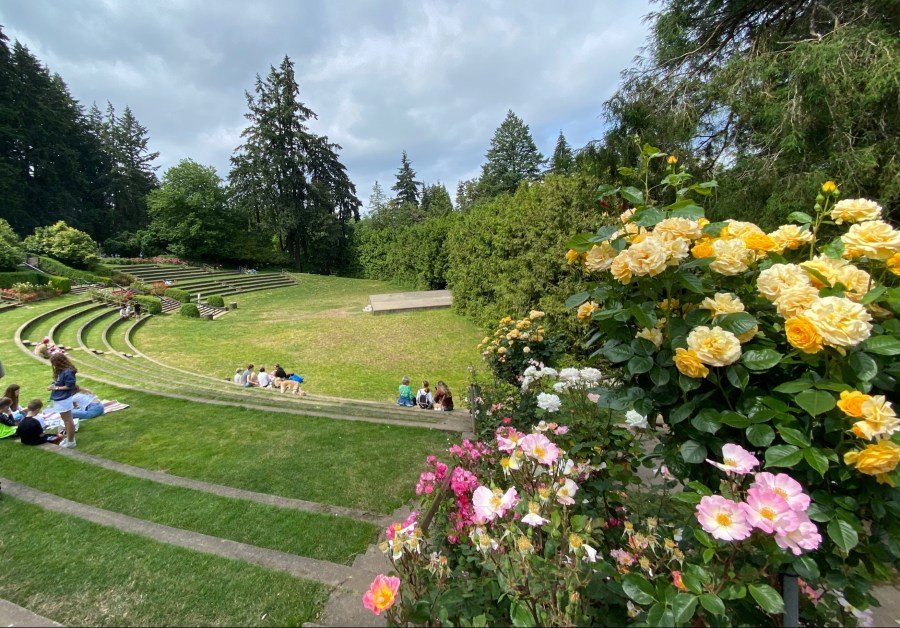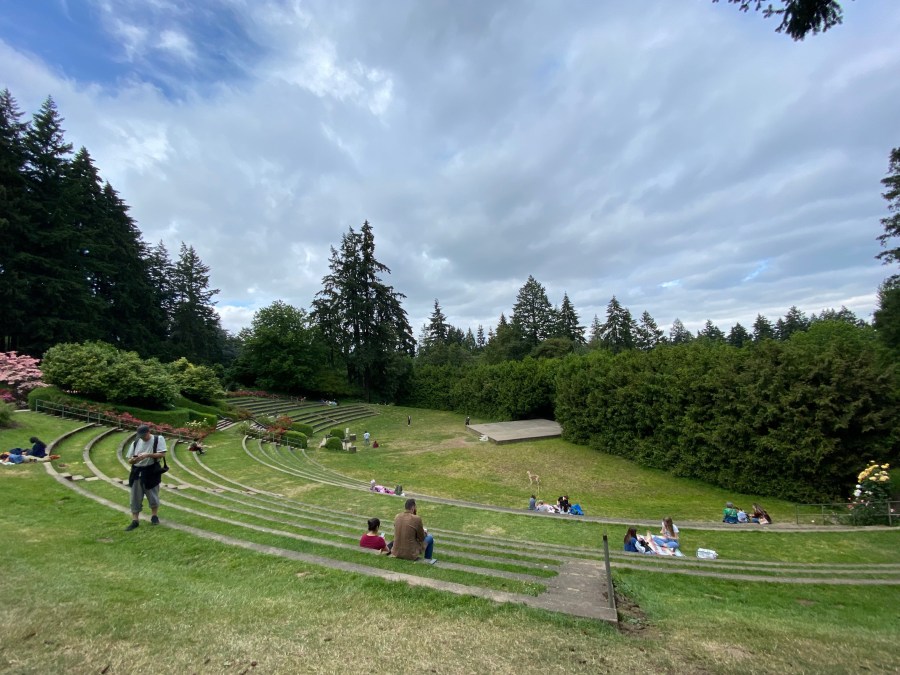PORTLAND, Ore. (KOIN) — Once a hotspot for Portland’s open-air concerts, featuring popular acts like James Brown, Johnny Cash and the Violent Femmes, the Washington Park Amphitheater is in a notable decline.
In the last 17 years, the number of Washington Park Amphitheater events planned by Portland Parks and Recreation has dwindled: From 18 shows in 2005, to 15 in 2006, to 10 in 2010, eight in 2014, four in 2016 and three in 2018. Since then, the parks department has hosted no more than three shows a year in the outdoor space.
After shuttering during the pandemic in 2020 and 2021, Portland Parks and Recreation reopened the amphitheater to another historically limited concert season. The reason for the declining number of shows, PP&R spokesperson Mark Ross said, is the aging venue’s limited seating capacity. Built in 1925, the concert space can currently hold about 3,500 people. With bigger and better arenas available in Portland, including the more modern concert lawn at the nearby Oregon Zoo, the historic theater may have seen its best days.
“The amphitheater has a rich history of notable performances,” Ross said. “Promoters that put on these large acts in the past consistently found that their production costs outweighed the revenue they could bring in due to the limited number of seats available. Portland Parks and Recreation continues to activate the space with our arts and culture offerings via our Summer Free For All series.”

While the parks department’s summer concerts aren’t the only shows held at the park each year, its independent shows are few and far between. Original Practice Shakespeare Festival co-director Jennifer Lanier, who reserved the theater for two donation-based performances of “A Midsummer Night’s Dream” and “Romeo & Juliet” in August, said the lack of interest could be related to PP&R’s prices.
“The usage fee charged by the Parks department is really high for that venue,” Lanier said. “We paid about $1,000 for two nights. That was their discounted fee. There were about 200 people in the audience each night — a nice turnout for us. We don’t charge admission for our shows, we pass buckets after the performance and just made enough to cover the park fee.”
Responding to Lanier’s thoughts, Ross said that rates are set to ensure events are cost-recoverable for PP&R. Outlining the park’s publicly accessible rental fees, Ross explained that organizations like OPS Festival can receive lower rates if they decline to accept donations from the audience.

“We enjoy permitting to the Shakespeare festival, and they, like many, receive reduced costs due to their mission alignment,” he said. “The fees PP&R charges are minimal in relation to the cost of putting on a show at the amphitheater, and have repeatedly been deemed not to be a primary barrier.”
The prices aren’t the only issues with the 97-year-old amphitheater. While Lanier said that OPS Fest performers have fun performing in the park, and that sound carries well in the amphitheater, the absence of lighting and unsanitary bathroom conditions, she said, don’t match the price.
“There isn’t great support from the parks department for what they charge,” Lanier said. “There was a porta-potty backstage, but it hadn’t been cleaned for months, so it was not usable. We had to trek up to the top of the audience steps to use the restroom, which is hard in the middle of a show because of how long that trip takes.”
These issues are known, Ross said, and PP&R reportedly hopes to solve some of them soon.
The department’s 106-page master improvement plan for Washington Park, published in 2018, includes the addition of a backstage building that would provide musicians and performers with restrooms and private storage. The plan also calls for a bandshell and a drainage system for grass-level seating. However, the amphitheater portion of this project remains unfunded.
“The master plan is a blueprint to guide the future of the entire park,” Ross said. “Not every element is funded, including the projects related to the amphitheater.”
Presently, PP&R would need more than $500 million to fix all of the deferred maintenance across the city’s entire park system; this, the parks department stated in its 2022-2023 annual budget, is its most pressing challenge. As a result of PP&R’s budgetary needs, it’s unclear if or when the proposed amphitheater upgrades will ever materialize.
While Lanier said that OPS Festival would host more shows at the amphitheater if PP&R could lower its prices, the department’s latest annual budget report reveals its own financial woes, which present a grave future for its aging assets.
“PP&R’s major maintenance funding backlog is over $500 million and growing every year,” the PP&R budget report states. “Despite utilizing a variety of funding sources, current underfunding leaves a structural funding gap that is tens of millions of dollars annually. The consequence is that more and more assets will be taken out of service — or become considerably more expensive to rehabilitate as they degrade further.”
Details about the parks department’s plans to become financially “sustainable,” can be found on the city’s website. People interested in hosting events at the Washington Park Amphitheater can click here for more information.
“PP&R is interested in continuing to permit events at the amphitheater,” Ross said. “Promoters are encouraged to reach out to PP&R to explore opportunities.”
